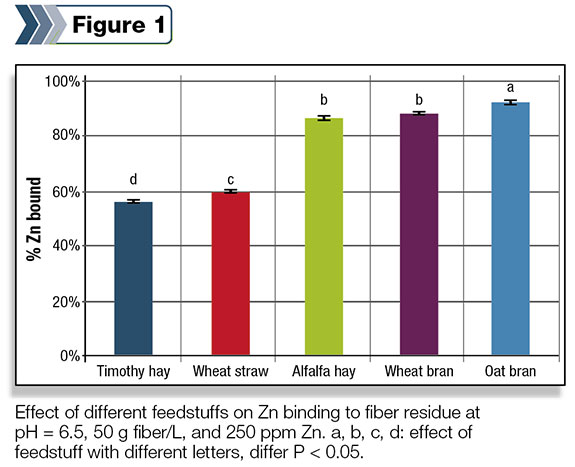All nutritionists look for ways to reduce risks. This is done by keeping a close eye on sources of variation in the diet, from changes in forage dry matter (DM) to managing consistency in the TMR. The rationale for reducing these risks is to ensure cows have adequate dietary sources of nutrients that can be reliably delivered to target tissues to consistently support optimal performance.
The result is that cows produce milk and milk components close to the amount predicted based on their genetic merit, environmental conditions and diet provided.
Dietary antagonisms are a risk for cows that must be managed by nutritionists; they tie up nutrients and are robbing cows of needed nutrients. Antagonisms can come in a number of forms; essentially, it’s anything that impacts the absorption of nutrients.
For the remainder of this article, we’ll focus on mineral nutrition and how dietary antagonisms can reduce their absorption.
Dietary antagonisms for minerals can be:
- Imbalances in inorganic or free minerals
- Poor water quality – It’s not uncommon to come across water with high sulfate (1,000 ppm or more) or iron (0.3 ppm or more) levels. These compounds act as antagonisms in the diet.
- Feeds with high mineral levels – One common example is DDGs, as they have high sulfur levels. Another common occurrence is forages with high ash content due to harvesting of soil with the crop.
This additional ash contains additional minerals, which may be acting as antagonisms in the diet.
- Dietary fiber – New research presented at the American Dairy Science Association meetings demonstrated that fiber can bind zinc and copper when it’s present in the sulfate form.

Using fibrous feedstuffs ground through a 1 mm screen, binding of zinc and copper sulfate to the fibrous feedstuffs was evaluated under ruminant relevant conditions.
As shown in Figure 1 , 56 to 92 percent of the zinc bound to the fibrous feedstuffs, with the following rankings: timothy hay less than wheat straw, wheat straw less than alfalfa hay, alfalfa hay less than wheat bran, wheat bran less than oat bran.
Many nutritionists’ response to the problem of dietary antagonisms is to simply feed more inorganic trace minerals.
Often times, this course of action can exacerbate the existing problem and has the potential to create additional mineral imbalances.
The best course of action is to feed an organic trace mineral with a strong molecular structure that can deliver the mineral to the site of absorption by minimizing the affects of antagonisms and increasing absorption more effectively than its inorganic counterparts.
This course of action was applied in a case study on a commercial feedlot (published in the Professional Animal Scientist ). In this experiment, cattle drank well water with high sulfates (about 1,650 ppm).
Half of the cattle were fed inorganic trace minerals while the other half of the herd was supplemented with additional chelated organic trace minerals (copper, manganese and zinc in a chelated form).
The addition of the chelated organic trace minerals resulted in reduced mortality (4.71 to 2.44 percent) and reduced number of cattle treated (47.09 vs. 37.81 percent).
These data demonstrate that feeding a high-quality organic trace mineral can counteract the negative effects of a dietary antagonism.
As nutritionists, you all deal with risk factors on your dairies. The key is to reduce that risk as much as possible. Reducing that risk results in the ultimate reward of the cows producing milk in a healthy and efficient manner.
Evaluate what dietary antagonisms may be robbing cows of nutrients and feed a reliable source of organic trace minerals to counteract these antagonisms. PD
Rastani received her Ph.D. from the University of Wisconsin. She is employed by Novus International. Zanton is also with Novus International.
References omitted due to space but are available upon request. Click here to email an editor.

-
Robin R. Rastani
- Dairy Technical Manager
- Novus International
- Email Robin R. Rastani





